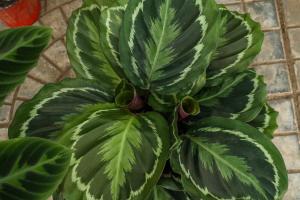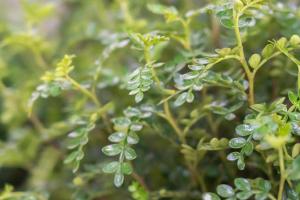How to Unify Different Potted Plants
Having a collection of potted plants can add beauty and life to any room or outdoor space. However, when each plant has a different look and feel, it can create a disjointed and chaotic aesthetic. Luckily, there are several ways to unify different potted plants and create a cohesive and visually pleasing display.
1. Consider the Colors
One of the easiest ways to unify a collection of potted plants is to consider the colors of both the foliage and the containers. Choose a color scheme and try to stick to it as much as possible. For example, you could choose a pastel color palette and pick plants with light green or pink leaves, as well as pots that are soft blues or pinks. Alternatively, choose bold and bright pots and plants that complement each other, such as a bright yellow pot with a red-veined plant.
2. Vary the Size and Shape of the Pots
While it may seem counterintuitive, varying the size and shape of the pots can actually help unify a collection of plants. By having different sizes and shapes, the eye is drawn to the similarities and differences of the different containers, rather than the differences in the plants themselves. If you have a mix of shapes and sizes, try grouping similar pots together to create a flow and to avoid a scattered look.
3. Use Similar Planters or Baskets
If you have a mix of plants that do not seem to have a unifying element, consider using similar planters or baskets to bring them together. If you have a mix of cascading plants, consider using baskets with similar patterns or colors to create a cohesive look. Similarly, you could use the same style of pot or planter, such as terracotta, to help unify the plants.
4. Incorporate a Focal Point
If you have a lot of plants, it can be overwhelming to try and make them all look unified. Instead, try incorporating a focal point that ties everything together. This could be a larger plant, a decorative object, or a piece of furniture that complements the overall aesthetic of the plants. By having a focal point, the plants can work together to enhance it, rather than competing for attention.
5. Cluster Plants Together
When trying to unify a collection of plants, clustering them together can be a useful tool. By grouping similar plants together, you create a sense of cohesiveness and flow. This technique is especially useful if you have a lot of smaller plants. Try planting them in the same type of pots, or grouping them together in a dedicated area of your space.
Unifying a collection of potted plants doesn’t have to be difficult or time-consuming. With a few simple techniques, you can create a cohesive and visually pleasing display that will enhance any room or outdoor space.

 how many times do yo...
how many times do yo... how many planted tre...
how many planted tre... how many pine trees ...
how many pine trees ... how many pecan trees...
how many pecan trees... how many plants comp...
how many plants comp... how many plants can ...
how many plants can ... how many plants and ...
how many plants and ... how many pepper plan...
how many pepper plan...
































